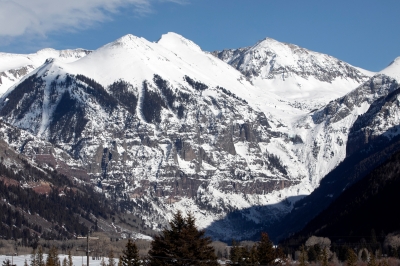
|
As altitude increases, the air gets colder. There comes a certain height, called the snow line, above which it is always too cold for the snow to melt, which is why some mountaintops are snow-capped all year round. The snowline is at 5000m in the tropics, 2700 m in the Alps and at sea level at the poles. |
The top of the mountain is actually its coldest spot. As you climb a mountain to a higher altitude (height), the atmosphere gets thinner and thinner. This is because air pressure decreases with altitude.
Even though warm air rises, as it does so the rising air expands and cools. When it expands and cools, it can’t absorb and retain heat the way it does at the bottom of the mountain.
Although mountaintops are closer to the Sun, they’re also farther away from the thermal heat of the Earth’s core that keeps the ground warm. So the top of the mountain can be much colder than the bottom.
In fact, the bottom of a mountain can be located in a tropical jungle while the top of the mountain has snow on it! That’s why it’s possible to have snow at the equator.
Cooler temperatures at the top of a mountain also mean that there’s less evaporation taking place. This leads to greater amounts of moisture in the air. More moisture means more rain and, at the very top of a mountain, more snow.
Not all mountains have snowcaps, and not all mountains that get snow have snowcaps all year. A lot depends upon their location and how tall they are. Mountains lower in altitude are less likely to have snowcaps or to have them all year long.
Many mountains, though, have snowcaps year-round. Above a certain point — called the snow line — it stays cold enough that the snow never melts.
The height of the snow line varies around the globe. It depends upon both altitude (height of the mountain) and latitude (where the mountain is located). The snow line is much higher near the equator (about 15,000 feet), for example, than it is near the poles (sea level or 0 feet in altitude).
The snow line can be affected by other factors, too. For example, in the Andes Mountains of South America, it is so dry that the mountains rarely see snow, despite their height and distance from the equator. Monte Pissis in Argentina is the tallest mountain in the world without a permanent snowcap.
Mountains that are near coastlines may have a lower snow line than other areas with the same altitude and latitude. As you get closer to a coastline, the amount of moisture in the air tends to produce more snowfall at higher altitudes.
Credit: Wonderopolis
Picture Credit : Google




